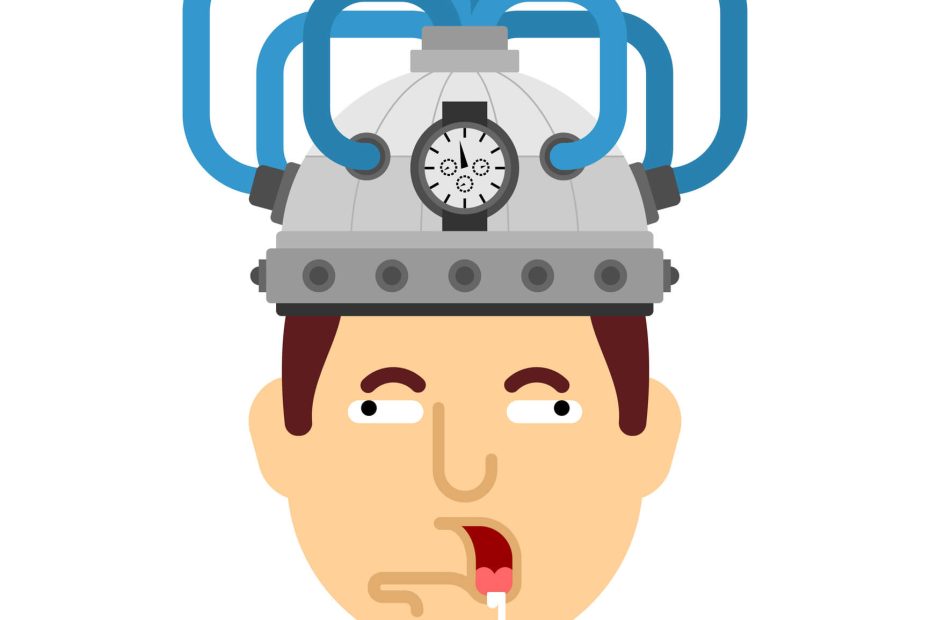I was surfing Amazon the other day when I came across the most peculiar thing. It was a brain stimulator, a research tool like the one we often use in the lab I work in to study the brain. Yet this wasn’t a device manufactured for research purposes; it was marketed to the average consumer as an all-in-one panacea to boost cognitive performance, treat mood disorders and accomplish who knows what else. Naturally, I was intrigued, a curiosity that led me down the rabbit hole of direct-to-consumer devices and to this computer screen to share what I’ve learned. Let’s get started, shall we?
First, we should talk about what these brain stimulators are and what they do. The type of brain stimulation device I found on Amazon was a transcranial direct current stimulation (tDCS) device. It is part of a family of other noninvasive brain stimulators (NIBS), which includes transcranial alternating current stimulation (tACS) devices and transcranial magnetic stimulation (TMS) devices. These so-called NIBS devices are a type of neuromodulator, similar to other such neuromodulators like antidepressants, deep brain stimulators and psychedelics in their ability to temporarily change how the brain functions.
NIBS devices take advantage of the fact that your brain is essentially an electric circuit, meaning it operates according to the laws of electromagnetism. By placing one of the devices on the scalp, you can weaken or intensify the electromagnetic fields just under the surface, where you can hit all the higher cognitive areas. Modulating the amplitude and frequency of stimulation produces different effects that ultimately influence how easily and how long the neural cells within the fields fire signals to other cells throughout the brain. And since the brain is heavily interconnected, changing how one part communicates eventually affects other connected areas. Neuroscientists have been using this technique for decades, stimming the brains of volunteers and patients to learn how their minds function or “dysfunction,” all without having to open up their skulls or subject them to weeks of drug testing. It’s really quite a beautiful piece of technology.
What’s even more exciting is that some NIBS devices have been shown to successfully treat neuropsychiatric conditions like depression, with some already receiving FDA approval for clinical use.1 But this is where the story starts to become a little murkier. There are a lot of new companies producing new devices to deliver NIBS (see the source below for a list of just TMS devices). While these companies have largely received FDA approval for their products, the technical specifics (e.g., circuitry and stimulation pulse characteristics) of how their brain stimulators actually work are hard to come by.
I originally thought, at least these devices are only being sold to researchers and clinical professionals with years of experience studying and treating these disorders with or without NIBS. They probably have a good idea of how to determine the efficacy of all this new tech, so we shouldn’t worry about any of it being misused, right? Well…this may no longer be the case…
Here we are, back at Amazon. The device I found is only one of already several direct-to-consumer NIBS devices being sold online. I’ve only researched Amazon, so there’s no telling where else you can purchase these devices. However, the general trend is that they claim to treat your brain in some way or another, but don’t provide specifics on how they do this, how long the effects last, if the treatment is safe and so on and so forth. Admittedly, I haven’t purchased one of these devices myself to judge firsthand; they’re not exactly cheap, either. But even so, I haven’t found any evidence-based research that vouches for the consumer variants beyond anecdotes swearing their effectiveness and interesting comments like, “This battery make brain go buzz.”
Maybe it does something to your brain, maybe it’s just a placebo, maybe this is all just neuro-hype, but who knows? I enjoy seeing people get excited about new science, especially that which helps us live better lives, but with technology as new and untested as this, it’s best to err on the side of caution. Ask your doctor what they think. Perhaps NIBS is exactly what you need — in which case, they can refer you to trained professionals. Do what you think is best for your health, but please keep your wallets safe and your brains safer.
Sources:
- Gutiérrez-Muto AM, Bestmann S, de la Torre RS, Pons JL, Oliviero A, Tornero J (2023) The complex landscape of TMS devices: A brief overview. PLOS One 18(11).
Related Content
- ‘This Is Your Brain on Drugs’ — Well, on Marijuana at Least
- What Birds in Love Teach Us About How the Brain Processes Competing Motivations
- How the Brain Makes Sense with Mental Maps
Want to read more from the Johns Hopkins School of Medicine? Subscribe to the Biomedical Odyssey blog and receive new posts directly in your inbox.
